Faroe Pony | Faeroes Pony | Faeroe Island Horse
Faca Galizana
Falabella
Fell Pony
Finnhorse | Finnish Universal
Finnish Warmblood
Fjord horse
Flemish Horse
Fleuve
Flores Pony
Florida Cracker Horse | Florida Horse | Florida Cow Pony
Foundation Quarter Horse
Fouta Horse | Foutanké
Frederiksborg Horse
Freiberger horse | Franches Montagnes | Freiberger
French Saddlebred / Halfblood
French Anglo Arab
French Ardennais
French Cob
French Saddle Pony
French Sport Horse
French Trotter
Friesian
Friesian Sporthorse
Furioso Horse
Horse breeds from Unknown
East Bulgarian Horse
East Friesian Horse – Old Type
East Friesian Warmblood
East Prussian
Edelbluthaflinger
Ege Midillisi
Egyptian Arabian | Egyptian Horse
Einsiedler
Eleia
English Thoroughbred
Equus Kinsky
Equus Przewalskii
Eriskay Pony
Erlanbach
Erlunchun
Esperia Pony
Estonian Draft | Estonian Arden
Estonian Native
Exmoor Pony
Dagestan Pony
Dahoman
Dales Pony
Daliboz Horse | Deliboz
Deliorman | Deliormanski
Danish Sport Pony
Danish Wamblood
Danube Delta Horse
Danubian | Dunav
Darashouri | Darashouli
Darfur Pony
Dartmoor Pony
Datong Horse
Debao Pony
Deli Pony
Desert Norman Horse
Deutsches Reitpony
Dilbaz | Deliboz | Daliboz | Delibozskaya
Djamoi | Djamonský Pony
Djerma Horse
Døle Gudbrandsdal | Dølehest | Døle Trotter
Dolny-Iskar
Don | Donskaya
Dongola | Dongolah | Dongolawi
Dosanko Horse
Drum Horse
Dülmen Pony
Dutch Draft
Dutch Harness Horse
Dutch Warmblood
Dzhabe
Calabrese
Calvinia Horse
Camargue Horse
Camarillo White Horse
Campeiro
Campolina
Canadian Cutting Horse
Canadian Horse
Canadian Pacer
Canadian Rustic Pony
Canadian Sport Horse / Canadian Hunter
Canadian Warmblood
Canik
Cape Harness
Cape Horse
Carolina Marsh Tacky
Carpathian Pony
Carthusian Horse
Caspian
Castilian Horse
Catria Horse
Cayuse Pony
Celtic Pony
Cheval Demi sang du Centre
Cerbat Mustang
Certisino
Chahou Post Pony
Chaidamu Pony
Chakouyi
Chalosse Pony
Champagne Horse
Chamurthi
Chapman Horse
Charentais
Charollais
Charysh / Chara
Cheju Pony
Cheval d’Auvergne
Cheval de Corlay
Chickasaw Horse
Chicksaw Pony
Chilean Corralero
Chilkow
Chilote Pony
Chincoteague Pony
Choctaw Horse
Chumbivilcas Horse
Chumysh Horse
Chyanta Pony
Cimarron Horse
Cleveland Bay
Clydesdale
Cob
Coffin Bay Pony
Coldblooded Trotter | Coldblood Traveling Rail
Colonial Spanish
Colorado Ranger
Comtois horse
Conestoga Horse
Connemara Pony
Corajoso / Courage Pony
Corolla Island Pony
Corsican Horse | Corsica Horse
Cossak Horse
Costa Rican Saddle Horse
Country Saddle Horse
Cretan Horse
Criollo
Crioulo
Crioulo Brasileiro | Curraleiro
Croatian Hladnokrvnjak
Croatian Posavac
Cuban Paso
Cuban Pinto
Cukurova
Curly Horse
Curly Haired Fox Trotter
Cutchi
Czech Coldblood
Czechoslovakian Small Riding Horse
Czech Warmblood
Baguales
Baguio Light Horse
Baguio Pony
Bahr-El-Ghazal
Baikal
Baise
Baixadeiro Horse
Bajau Pony
Bakhtiari
Baladi
Balearic Horse
Bali Pony
Balikun Horse
Baluchi Horse
Banamba
Banat
Bandiagara
Ban-ei
Banker Pony
Barb
Bardigiano
Barra / Bara Pony
Barthais Pony
Bashkir Horse
Basotho Pony | Basuto Pony
Basque Pony
Batak Pony
Bavarian Warmblood
Beledougou
Belgian Ardennais
Belgian Draft
Belgian Sport Horse / Belgian Halfblood
Belgian Warmblood
Bergmann Pony
Bhorum Pony
Bhotia Pony | Bhutia Pony
Bidet Horse
Bigourdan Horse
Bitcuk / Bityug
Black Forest Horse
Black Sea Horse
Blazer Horse
Boerperd
Bolivian Pony
Borneo Pony
Bose Pony
Bosnian Pony
Boulonnais
Brabant / Barbancon
Brandenburger
Brazilian Pony
Brazilian Sport Horse
Breton
British Appaloosa
British Riding Pony
British Shetland
British Spotted Pony
British Thoroughbred
British Warmblood
Brumby
Buckskin
Bucovina
Budyonny
Bulgarian Native Horse
Buohai
Burmese Pony
Busak Posavec
Buryat
Byelorussian Harness Horse
Abaco Barb
Abstang
Abtenauer
Abyssinian Horse
Adaev
Aegidienberger
Akhal-Teke
Albanian Horse
Altai
Alter Real
Altwurttemberg
American Albino
American Bashkir
American Cream Draft
American Drum Horse
American Indian Horse
American Mammoth Jack
American Miniature Horse
American Mustang
American Quarter Horse
American Paint Horse
American Saddlebred
American Shetland
American Sport Pony
American Spotted Paso
American Standardbred
American Thoroughbred
American Walking Pony
American Warmblood
Amur
Anadolu Pony
Andalusian
Andean
Andravida
Anglo-Arabian
Anglo-Kabarda
Anglo-Karachai
Anglo-Luso
Appaloosa
Appaloosa Sport Horse
Appendix Quarter Horse
AraAppaloosa
Arabian
Arabian-Berber
Arabo-Friesian
Arabian-Haflinger
Araboulonnais
Aralusian
Ardahan
Ardennes
Arenberg-Nordkirchener
Argentine Anglo
Argentine Criollo
Argentine Polo Pony
Argentinean Modepony
Argentinian Ranch Horse
Ariègeois Pony
Arravani
Asiatic Wild Horse
Asil
Assateague Pony
Astrakhan
Asturcón | Asturian
Australian Brumby
Australian Draught
Australian Pony
Australian Stock horse
Australian Warmblood
Austrian Warmblood
Autre Que Pur Sang
Auxois
Avelignese
Azerbaijan
Azores
Azteca
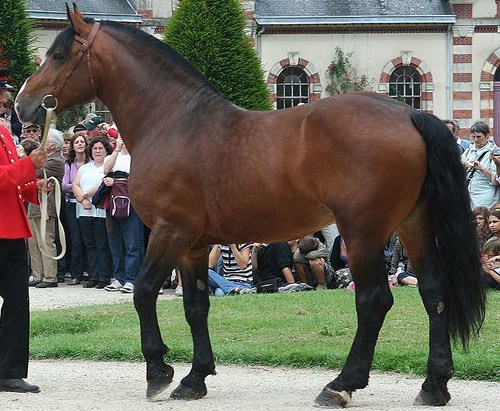
Origins
Cob is a type rather than a specific breed, in the UK it is often used to descrive a common riding horse and in the US it is generally used to describe the Welsh Cob. Today the Section D Welsh Cob is the typical build of a historic Cob, it is said a good show cob should have “the head of a lady & the backside of a cook.”
(more…)
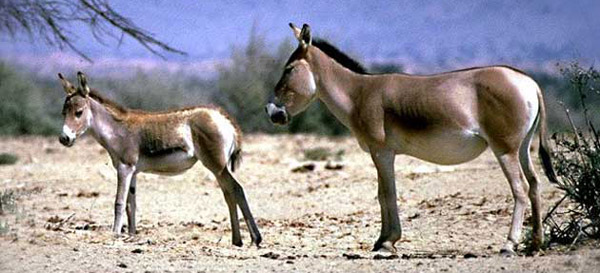
Intro
The most horse-like of the ass species, the Asiatic wild ass is now classified as an endangered species.
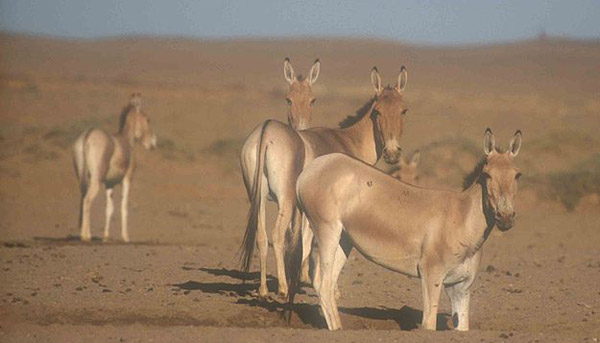
Origins
The ancestors of these animals go back more than 40,000 years and during the late Pleistocene era their range extended as far west as Germany. Currently they are found in vastly reduced territories.
There are five recognized subspecies of this ass.
1. Mongolian Wild Ass or Equus hemionus hemionus
2. Indian Wild Ass or Equus hemionus khur
3. Turkmen kulan or Equus hemionus kulan
4. Onager or Equus hemionus onager
5. Syrian Wild Ass or Equus hemionus hemippus
The Mongolian Wild Ass is the most abundant of the sub-species and accounts for almost 80% of the species entire population. The rest of the sub-species have numbers in the triple digits and are facing extinction.
Features
Average height 11 – 11.8 hands
Physique
Large head with slender mouth
Ears are long and pointed
Limbs are powerful
Hooves are small and strong
Traditional Colors
Dun, often with a mealy gene
Temperament
These are wild animals
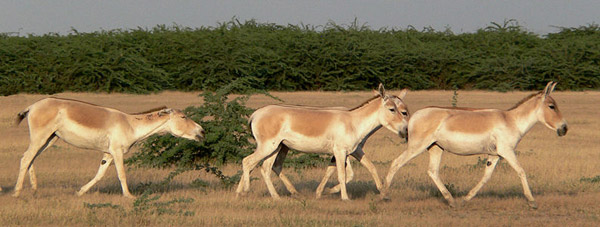
Helpful Links
*All links open in a new window
Arkive
China Culture
Video

Intro
Today almost every breed owes some of its genetics to the Arabian horse. The beautiful & mighty Arabian is perhaps the fountainhead of the World’s horse breeds. Displaying one of the most well-recognized profiles in the horse world, the Arabian’s physical loveliness is complimented by a hardy spirit & adaptable nature.
(more…)

Intro
A wild member of the horse family Equidae, the African Wild Ass (Equus africanus) is thought to be the ancient ancestor of the domesticated donkey often seen today.
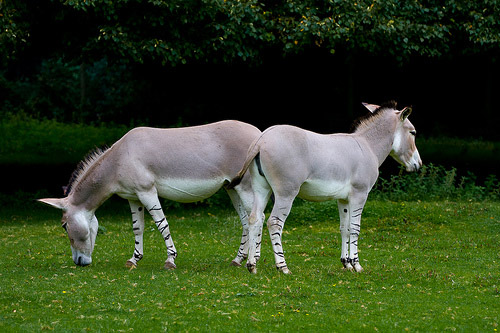
Origins
This breed is native to dry areas of northeastern Africa such as Eritrea, Ethiopia and Somalia. They have a tough digestive system which efficiently extracts moisture from their diet of vegetation, this allows them to go a long time between watering.
These animals generally live in small family groups instead of herds due mainly to the sparse vegetation in their habitat. They are very loud and can communicate verbally with other asses up to 2 miles away.
Today conservation efforts are being made because there are only a few hundred left in the wild. This is a result of a combination of factors. Interbreeding with domesticated stock has compromised the purity of their ancient bloodlines.
They are also forced to compete with domestic livestock and agricultural needs for the limited resources of the area. Not to mention they are traditionally hunted for food and medicine in both Ethiopia and Somalia.
They are legally protected in most of the countries where they are found, however these laws are next to impossible to enforce.
Features
Resilient animals that have thrived for thousands of years in an unforgiving climate
Physique
Typical donkey with stocky body
Ears are large to help cool them and give them keen hearing
Mane is stiff and upright and tipped with black
Tail is short and ends in a black brush
Hooves are slender and close to the same diameter as the legs
Traditional Colors
Dun displaying the mealy / pangare gene and primitive markings
Temperament
That of a wild animal
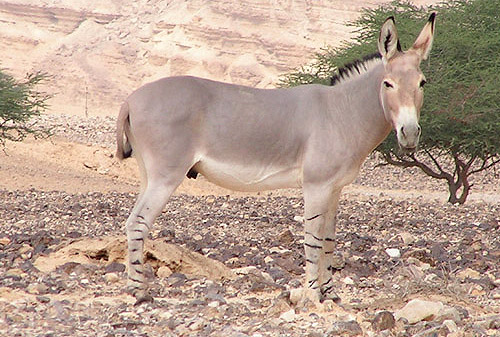
Helpful Links
*All links open in a new window
Ultimate Guide to the African Wild Ass
African Wild Ass Archive